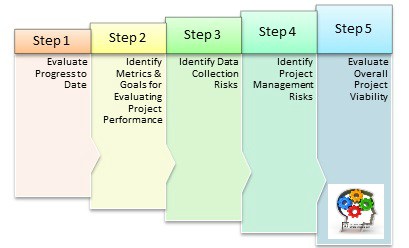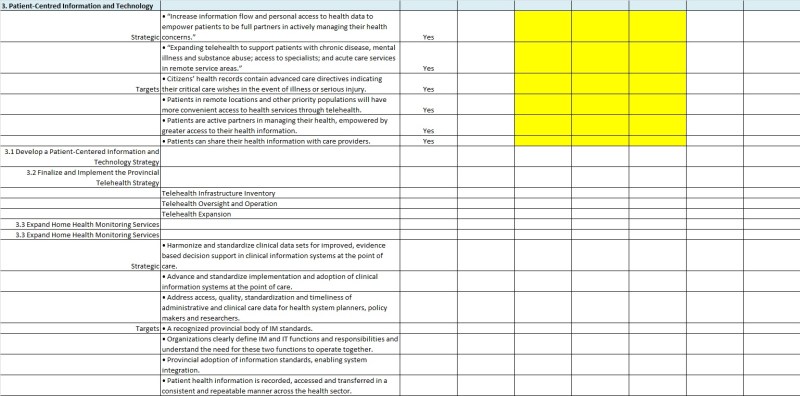Evaluating a new project opportunity requires understanding the project, requirements, and the environment in which the project is being delivered. Beginning with the bid process the project manager should begin conducting a literature review and risk assessment of:
- The project’s current status,

- Goals and evaluation metrics,
- Data collection risks, and
- Project management risks – to
- Evaluate Overall Project Viability
The 5 Step RFP Review Process Model
The five step RFP process review model below was used to evaluate a Ministry of Health RFP. Extensive information about the MOH project can be found below:
Ministry of Health. (2015). ENABLING EFFECTIVE, QUALITY POPULATION AND PATIENT-CENTRED CARE: A PROVINCIAL STRATEGY FOR HEALTH INFORMATION MANAGEMENT AND TECHNOLOGY. Retrieved from http://www.health.gov.bc.ca/library/publications/year/2015/IMIT-policy-paper.pdf
Step 1: Evaluate Project Progress to Date
The following spreadsheet provides one example of how project updates can be mapped. Each item in column-one represents a goal and deliverable for the MOH project. Column-One identifies level 1 deliverables and column-two provides level 2 deliverables (that represent a high level work breakdown structure). Based on the literature review the project status was updated to show if the deliverable was in progress and at what stage.
For simplicity the 5 project management process groups, which represent the development life-cycle of the project, were used. Because these groups are overlapping, and not discrete, mapping each deliverable across the life-cycle requires a bit of guesswork. Actual progress of each deliverable, mapped against the project schedule(s), is the 6th step immediately upon receiving approval for the bid.
Step 2: Identify Metrics & Goals for Evaluating Project Performance
The following template was used to map out the level 1 and level 2 metrics (and impact goals) identified in the literature. Understanding these goals is crucial towards evaluating the project schedule, requirements and work breakdown schedule, budget, and scope.
Step 3: Identify Data Collection Risks
The following spreadsheet was used to collect and report on information in the MOH report about data collection. Because the MOH project includes building out a data collection framework (and standards) there was a lot of information available. When submitting bids the project manager is able to gain some sense of the project environment’s capacity, engagement, and commitment to delivering and evaluating the project goals.
Step 4: Identify Project Management Risks
The following template was used to document and report on project management risks identified in the MOH report. The first five risks represented significant system wide challenges to be addressed by the project management office, IMIT’s committees, and Health Authority representatives.
Step 5: Evaluate Overall Project Viability
With the above information the project manager can evaluate the Ministry of Health’s RFP’s viability. In this case the RFP was for 3-years with the possibility of three 1-year extensions. The hours per week still needed to be confirmed as the language in the RFP was incomplete, but other references indicated a full-time commitment was usually (but not always) required.
As this was an extension on a previous contract the project manager needed to evaluate progress to date. The available MOH publication reported on some progress with some indications that the project was behind on schedule, possibly due to the risks and barriers noted. Due to the scope of the MOH contract further exploration would be needed if the bid is approved.
Concluding Remarks
Additional questions and concerns relevant to each project’s industry also need to be identified. This includes the size of the team, reporting relationships, scope of authority, and location of the job site. With the MOH RFP the required site of work was in Victoria. Further language also clarified the candidate needed to have 5+ years of Canadian work experience. These details proved central to the current incumbent receiving an extension on their existing contract.
How is your project management office evaluating RFP’s? Share your insights below.
Read more: The Ultimate Guide to Writing Your First RFP Response — And Making it Kick Ass









